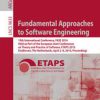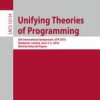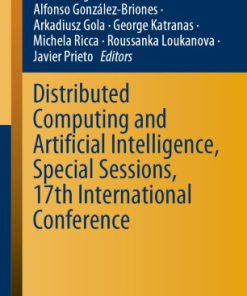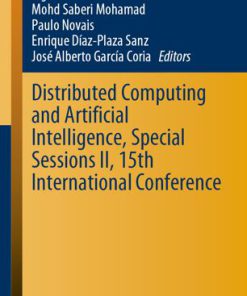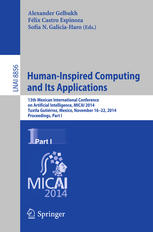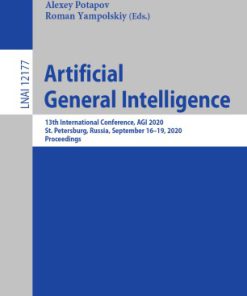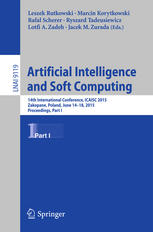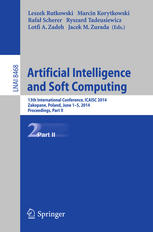Distributed Computing and Artificial Intelligence 13th International Conference 1st Edition by Sigeru Omatu, Ali Semalat, Grzegorz Bocewicz, Paweł Sitek, Izabela Nielsen, Julián García García, Javier Bajo 3319401621 9783319401621
$50.00 Original price was: $50.00.$25.00Current price is: $25.00.
Distributed Computing and Artificial Intelligence 13th International Conference 1st Edition by Sigeru Omatu, Ali Semalat, Grzegorz Bocewicz, Paweł Sitek, Izabela Nielsen, Julián García García, Javier Bajo – Ebook PDF Instant Download/DeliveryISBN: 3319401621, 9783319401621
Full download Distributed Computing and Artificial Intelligence 13th International Conference 1st Edition after payment.
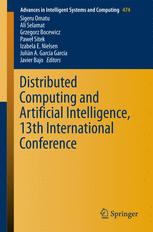
Product details:
ISBN-10 : 3319401621
ISBN-13 : 9783319401621
Author: Sigeru Omatu, Ali Semalat, Grzegorz Bocewicz, Paweł Sitek, Izabela Nielsen, Julián García García, Javier Bajo
The 13th International Symposium on Distributed Computing and Artificial Intelligence 2016 (DCAI 2016) is a forum to present applications of innovative techniques for studying and solving complex problems. The exchange of ideas between scientists and technicians from both the academic and industrial sector is essential to facilitate the development of systems that can meet the ever-increasing demands of today’s society. The present edition brings together past experience, current work and promising future trends associated with distributed computing, artificial intelligence and their application in order to provide efficient solutions to real problems. This symposium is organized by the University of Sevilla (Spain), Osaka Institute of Technology (Japan), and the Universiti Teknologi Malaysia (Malaysia)
Distributed Computing and Artificial Intelligence 13th International Conference 1st Table of contents:
Fuzzy Topsis Method Associated with Improved Selection of Machines of High Productivity
1 Introduction
2 Theoretical Framework
2.1 Fuzzy Numbers and Fuzzy Sets
2.2 Linguistic Variables
3 TOPSIS
3.1 Likert Scale
3.2 Defuzzification Method
3.3 Methodology
4 Study Case
4.1 Criteria to Evaluate
4.2 Triangular Fuzzy Sets Approximation for Each Label
4.3 Survey Application
4.4 Triangular Fuzzy Sets Modification for Each Label
4.5 TOPSIS Application
5 Results and Recommendations
References
A Conceptual Automated Negotiation Model for Decision Making in the Construction Domain
1 Introduction
2 Related Work
3 A Conceptual Model for Automated Negotiation
4 The Automated Negotiation Process
4.1 Decision-Making Process Based on Value Management
4.2 Negotiation Protocol
4.3 Negotiation Algorithm
4.4 Negotiation Process Base
4.5 Conflict Resolution Algorithm
5 Conclusion and Further Work
References
Self-Adaptive Organizations for Distributed Search: The Case of Reinforcement Learning
1 Introduction
2 Outline of the Simulation Model
2.1 Short Term Adaptive Search for Higher Levels of Performance
2.2 Mid Term Adaptation of the Organizational Set-Up Based on Reinforcement Learning
3 Simulation Experiments and Parameter Settings
4 Results
5 Conclusion
References
Distributed Denial of Service (DDoS) Attacks Detection Using Machine Learning Prototype
1 Introduction
2 Context and Recent Literature
3 Materials and Method
3.1 Design
3.2 Implementation n and Training
4 Results
5 Conclusions
References
The Algorithm of the Snail: An Example to Grasp the Window of Opportunity to Boost Big Data
1 Introduction
2 Literature Review
3 Presentation of “The Snail’s Algorithm”
3.1 Processing Phase
3.2 Generate Small Maps
3.3 Get the Results
3.4 Application with: “autour.com”
4 Conclusion
References
Structure and Operation of a Basic Genetic Algorithm
1 Introduction
2 Structure of a Basic Genetic Algorithm
3 Operation of a Genetic Algorithm
4 Conclusions
References
Comparison Study Between Chinese Family Tree and Occidental Family Tree
1 Introduction
2 Preliminary Concepts
2.1 Occidental Family Relationship
2.2 Chinese Family Relationship
2.3 Description of Family Tree Models
3 Related Work
4 Family Tree Search Algorithms
4.1 OFT Algorithm
4.2 CFT Algorithm
5 Study of Case – Succession of Ascendants
6 Conclusions
References
Combination of Trees for Guillain-Barré Subtype Classification
1 Introduction
2 Materials and Methods
2.1 Data
2.2 Performance Measures
2.3 Classifiers
2.4 Experimental Design
2.5 Parameter Optimization/Setting
3 Discussion/Results
4 Conclusions
References
Deep Neural Network Architecture Implementation on FPGAs Using a Layer Multiplexing Scheme
1 Introduction
2 FPGA Layer Multiplexing Scheme Implementation of the BP Algorithm
3 Results
4 Discussion and Conclusions
References
Tracking Users Mobility Patterns Towards CO2 Footprint
1 Introduction
2 Data Acquisition and Classification
3 Transportation Mode Identification
4 User Mobility Patterns
5 Mobility Invoice System
6 Mobility Advisor to Reduce the Carbon Footprint
7 Conclusions
References
Methodology for Knowledge Extraction from Mobility Big Data
1 Introduction
2 Work Methodology
3 Application Based on KD from Mobile Device Data
4 Conclusions
References
Smells Classification for Human Breath Using a Layered Neural Network
1 Introduction
2 Smell Sensors and Sensing System
3 Neuron Model
4 Error Back-Propagation Method
5 Measurement of Smell Data
6 Smell Classification of Breath Data
7 Training for Classification of Smells
8 Smell Classification Results
8.1 Single Smell Classification Results
8.2 Mixed Smell Classification Results
9 Conclusions
References
Constraint Solving-Based Itineraries for Mobile Agents
1 Introduction
2 Basic Approach
3 Constraint-Based Agent Itinerary Generation
4 Implementation
4.1 Runtime System
4.2 Agent Itinerary Interpreter
4.3 Constraint Solver for Agent Itinerary
4.4 Evaluation
5 Application
6 Related Work
7 Conclusion
References
δ-Radius Unified Influence Value Reinforcement Learning
1 Introduction
2 Multi-Agent Systems and Markov Decision Process
3 Dec-POMDP
4 δ-Radius Communication Model
5 δ-Radius Unified IVRL
6 Experiments
6.1 The Convergence Problem
6.2 Results
7 Conclusions
References
Personal Peculiarity Classification of Flat Finishing Motion for Skill Training by Using Expanding
1 Introduction
2 Motion Measuring System for Flat Finishing Skill Training
3 Feature Extraction of Filing Motion Based on Velocity Time Series
4 Peculiarity Classification by Expanding SOM
4.1 Structure of SOM
4.2 Expanding SOM
5 Classification Experiment
6 Conclusion
References
Kinect and Episodic Reasoning for Human Action Recognition
1 Introduction
2 Methodology
2.1 The Dataset
2.2 Bag of Key Poses
2.3 Common-Sense Reasoning
3 Validation and Preliminary Results
4 Conclusions
References
Ontology-Based Platform for Conceptual Guided Dataset Analysis
1 Introduction
2 Platform Arch hitecture
2.1 Conceptual Ma apper Module
2.2 Conceptual Selection and Enrichment Module
2.3 Data Processing Techniques Recommendation Module
3 Use Case. The Million Song Dataset
4 Conclusions and Future Work
References
Intragroup Density Predicting Intergroup Tie Strength Within Open-Source-Software Collaboration Netw
1 Introduction
2 Model Design
3 Empirical Analysis
3.1 Data and Measures
3.2 Empirical Results
4 Conclusion
People also search for Distributed Computing and Artificial Intelligence 13th International Conference 1st:
advances in distributed computing and artificial intelligence journal
advances in distributed computing and artificial intelligence journal scimago
international conference on distributed computing and artificial intelligence
advances in distributed computing and artificial intelligence journal scopus
advances in distributed computing and artificial intelligence journal fee
Tags: Distributed Computing, Artificial Intelligence, Conference, Sigeru Omatu, Ali Semalat, Grzegorz Bocewicz, Paweł Sitek, Izabela Nielsen, Julián García García, Javier Bajo
You may also like…
Computers - Computer Science
Computers - Computer Science
Computers - Computer Science
Computers - Computer Science
Computers - Computer Science


